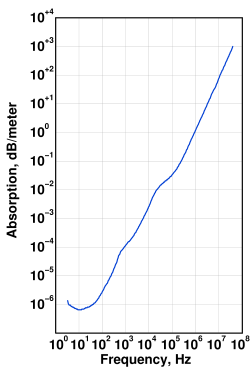 ast week, Fox News quoted a Nov. 2, 2018 article in the South China Morning Post, a
highly reputable paper in Hong Kong, as
saying
the Chinese military is considering the use of whale sounds to communicate between
submarines. The idea isn't to tame the whales, but to edit pre-recorded whale sounds
to conceal a human coded message, a process known as steganography.
ast week, Fox News quoted a Nov. 2, 2018 article in the South China Morning Post, a
highly reputable paper in Hong Kong, as
saying
the Chinese military is considering the use of whale sounds to communicate between
submarines. The idea isn't to tame the whales, but to edit pre-recorded whale sounds
to conceal a human coded message, a process known as steganography.
So a typical conversation on an American sub might go like this:
Whale: Wuuuuuuuoooouuuuu-Wo zai qianshuiting limian!-
uuuuuuuuuuuuuuuooooooooooooooooooooooooooooooooooooooooooooooooooooooooooooooo-Wai? Wai? Tingdaole meiyou?-ooooooooooooooooooooooooooooooooooooooooooooooooooooooooooooooooooooooooooooouuuuuuoooooooooooooooooowumppppp![1]
Sonar Operator: Sonar to Captain, sir, we found another talking whale! . . . I don't
know, sir, it sounds like it's talking in Chinese. . . . No sir, not a drop, sir!
The report attributes this idea to Han Guangjie, a computer scientist at Dalian University of Technology, a prestigious college in Liaoning Province.

Sonogram of blue whale sounds. Frequency units are Hz. Calls from blue whales are often below the range of human hearing. Original recording appears to have been filtered to remove sounds above 90 Hz. Sound source: [2]
It might sound amusing, but there are some advantages:
Sound in the ocean tends to focus itself into a sound channel (called a SOFAR channel), about 1.3 km beneath the surface, where the speed of sound is lowest (in the Atlantic, it's about 1500 m/s compared to 1560 above and below the channel). This is why low-frequency sound (around 100 Hz) travels great distances: it propagates in a horizontal pancake pattern rather than a sphere.
The distance sound can travel in the ocean depends on the frequency. Sound at 1 MHz only propagates as far as visible light, which is to say not very far, while sound at 100 Hz can travel 10,000 km before it loses 9/10 of its acoustic energy. In fresh water, a 100 Hz sound wave could circumnavigate the globe 70 times before losing 90% of its energy.[3]
Infrasonic sound waves are tough to focus, so they wouldn't give away your position.

Sound attenuation in the deep ocean. (redrawn from [4], page 445). (Highly recommended book, with many beautiful images.)
But right away we can see that there could also be a few problems.
The sub would have to generate a different whale call for each message. Otherwise, listeners could easily program their computers to recognize the individual call and subtract it out, leaving only the message. But randomizing the call would create problems: how would the intended receiver know which part was the message? Time-encoding wouldn't work, because the ocean is like a giant echo chamber. It would have to be frequency-encoded.
This creates a new problem. As mentioned, the distance a signal can propagate in water decreases dramatically as frequency increases. Compensating by making it louder causes cavitation, which can actually make the signal weaker. So a fake whale call containing ultrasonic digital noise would lose its information content within a short distance.
If they used an audio frequency, the high sound pressure levels needed to send a message a reasonable distance would annoy and maybe even deafen the crew. So they'd have to modulate the whale call with sound at the same low pitch the whale uses, giving it a very low bandwidth.
Because of all the echoes and other noise, the sender would have to use massive amounts of error-correction, which would reduce the bandwidth even more.
Both the US and Soviet navies used this technique with ELF radio waves. At those frequencies the message rate is on the order of one character every few minutes. Admittedly, radio waves are harder to deal with. A normal-sized antenna for 76 Hz ELF waves (US) or 82 Hz (USSR) would be extremely inefficient (a tiny fraction of a percent; for good efficiency, it needs to be at least 1/4 wavelength, or 613 or 568 miles), so the Navy built gigantic 14-mile-long antennas in Wisconsin and Michigan. Those antennas were so inefficient that it was necessary to pump over a million watts into them to get an effective radiated power of two watts. About 999,998 of those watts went into heating the Wisconsin countryside, but the other two watts could be heard at amazing distances. At ELF frequencies, the attenuation is only about 1–2 dB/1000 km, comparable to a sound wave of the same frequency in the ocean.
Nobody knows what these whale calls actually mean. What happens if it turns out to be a mating call? Could get embarrassing.
It could work, but it would take a long time for a message to reach its destination. And it wouldn't take long for a two-way conversation using 200-dB sound waves booming back and forth across the ocean to be noticed. They'd have to broadcast whale sounds continuously to defeat traffic analysis. These factors make it impractical.
It's much easier to use a tethered buoy sending focused microwaves to a satellite like everybody else. So, what they're really trying to tell us is that, in the event of a conflict, they expect there won't be many of those satellites left. The PLA may have just accidentally told us their plans.
[1]. Translation of human portion: “I'm inside a sub! Hello? Can you hear me?”
What the whale is saying is unknown.
[2]. Australian Dept. of the Environment & Energy.
Website.
[3]. Medwin, H. and Clay, C.S. Fundamentals of Acoustical Oceanography. Academic
Press, 1998.
[4]. Wille, P.C., Sound Images of the Ocean in Research and Monitoring.
Springer, 2005.
nov 10 2018, 4:35 am. edited nov 13 2018
